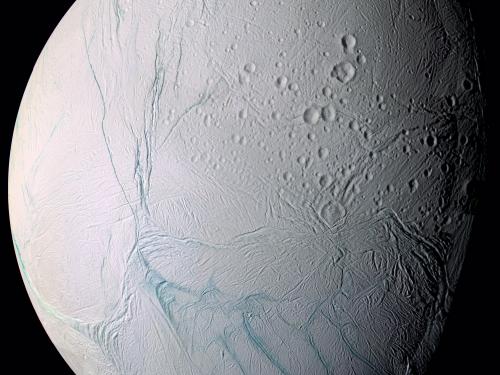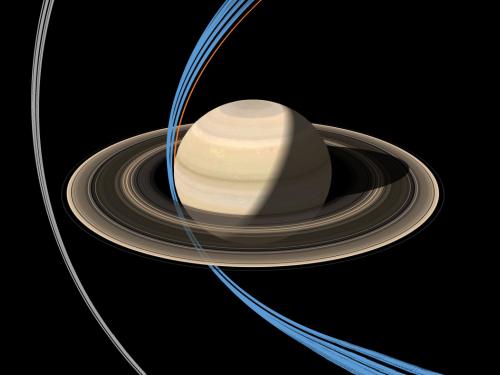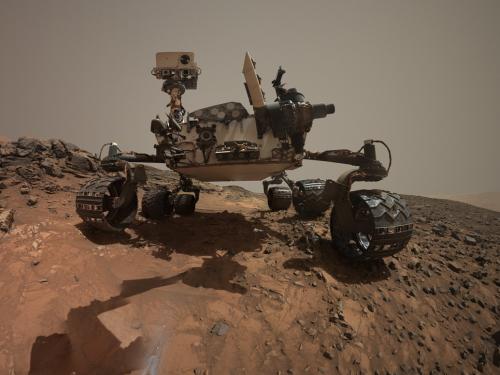

Stories of daring, stories of technological feats, stories of prevailing against the odds ... these are the stories we tell at the National Air and Space Museum. Dive in to the stories below to discover, learn, and be inspired.
Showing 81 - 90 of 145

March 15, 2018
When NASA’s Curiosity rover uses its robotic arm to snap a selfie on the surface of Mars, how does that picture get back to Earth? It’s thanks to programmers like Melody Ho.

January 05, 2018
The northeastern United States is experiencing record-breaking cold weather, with temperatures 20 to 30 degrees below average, according to the National Weather Service. Those are temperatures so frigid that parts of Mars—a cold, desert planet—are actually warmer than certain spots in the U.S. But how does Mars’ climate compare to that of our home planet?

December 06, 2017
This past August, CEPS scientists traveled to Iceland to study geologic features known as pit chains, which form in a similar way to pit chains on Saturn’s icy moon, Enceladus.

November 30, 2017
Using satellites and robotic rovers, we’ve learned quite a few details about the various planets orbiting our Sun. But what about other stars? What are their planets like? How weird do they get? It turns out, pretty weird.

September 27, 2017
If you’re going to Mars, which do you bring: water or a shovel? The question may sound a little tongue-in-cheek, but it actually goes right to the heart of a critical need for future human exploration of Mars – accessible water. Learn how the MARSIS instrument is helping answer this question.

September 15, 2017
At the end of the NASA Cassini spacecraft's 13-year mission, National Air and Space Museum scientists and educators are reflecting on what this mission has meant to them.

September 14, 2017
I think it surprises a lot of people that a mission as successful as the Cassini-Huygens Mission would be terminated on purpose. Not just shutting the spacecraft off, but terminated with such style by sending it on a destructive dive into Saturn’s atmosphere. Cassini will burn up and be destroyed in a similar way that a meteorite is broken up in Earth’s atmosphere.

July 28, 2017
You’ve probably heard of the National Aeronautics and Space Administration (NASA), but have you heard of the Italian Space Agency or the European Space Agency? NASA works with these groups, among others, to explore the frontiers of space together. It wasn’t always this way; Russia and the United States both devoted countless resources to beating each other to space in the 1960s. But today, through shared missions and space stations, we work cooperatively to explore the final frontier.

June 02, 2017
When John Grant was only 16, the Viking landers were sent to Mars. Today, Grant helps lead the operation groups controlling two Mars rovers, Opportunity and Curiosity, as a geologist at the National Air and Space Museum’s Center for Earth and Planetary Studies. Recent data collected by Curiosity and published in Science describes an ancient lake environment located at Gale Crater—an environment Grant, a coauthor of the article, believes holds further clues to whether there was ever life on the Red Planet.

May 04, 2017
In late March, I traveled to Puerto Rico to conduct observations of Venus using the Arecibo Observatory telescope. It was the second time I traveled to the observatory to make radar measurements of the surface of Venus. Even though it was my second time there, the size and capability of the telescope still impressed me; the telescope is largest single-aperture telescope ever constructed.